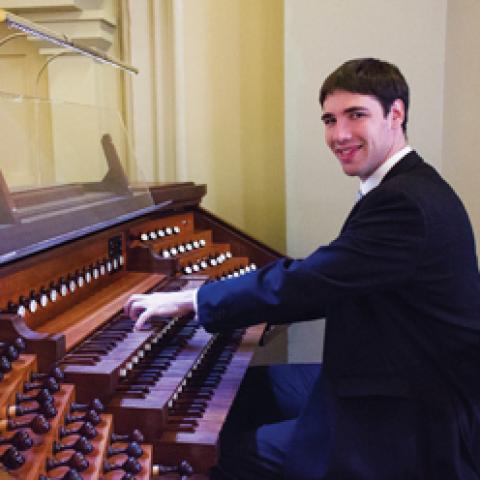
Pierre Pincemaille, 61, died, January 12, an international concert organist, church organist, music professor, and composer. Born in Paris, France, December 8, 1956, Pincemaille was awarded five first prizes at the Conservatoire National Supérieur de Musique de Paris (harmony, counterpoint, fugue, organ interpretation, and organ improvisation) and won five international improvisation competitions: Lyon (1978), Beauvais (1987), Strasbourg (1989), Montbrison (1989), and Chartres (1990).
In 1987, Pierre Pincemaille was appointed titular organist of the prestigious 1841 Cavaillé-Coll at the Gothic Saint-Denis Cathedral-Basilica. He loved accompanying beautiful liturgy there, amidst the tombs of the Kings of France. Highly inspired by Pierre Cochereau, Pincemaille founded a concert series there, from 1989 to 1994. For his 30th anniversary there, he performed his last concert on November 5, 2017, programming choral works he cherished, conducted by Pierre Calmelet: Louis Vierne’s Messe Solennelle and three of his own recently composed vocal motets (to be published), as well as J. S. Bach’s Pièce d’Orgue, BWV 572, symbolizing for him the three periods of life.
Pierre Pincemaille also performed with orchestras under the direction of conductors such as Mstislav Rostropovitch, Myung-Whun Chung, Riccardo Muti, Charles Dutoit, and John Nelson. His recordings include the complete organ works of Maurice Duruflé and César Franck, Charles-Marie Widor’s ten symphonies, selected pieces by Jehan Alain, Pierre Cochereau, Olivier Messiaen, and Louis Vierne, his own improvisations and transcriptions of Stravinsky’s The Firebird and Petrushka, as well as works with orchestra by Camille Saint-Saëns, Hector Berlioz, Joseph Jongen, and Aaron Copland. Several of Pierre Pincemaille’s compositions were published: Prologue et Noël varié [Prologue and Variations on a Noel] (Sampzon, Delatour France, 2007), a 4-voice a cappella Ave Maria (Lyon, À Coeur Joie, 2013), and En Louisiane for trombone and piano (Delatour France, 2017).
Recently, Pierre Pincemaille taught counterpoint at the Conservatoire National Supérieur de Musique de Paris, harmony at the Conservatory in Saint-Germain-en-Laye, and organ improvisation at the Conservatory in Saint-Maur-des-Fossés for the past 17 years. For the past 14 years, he formed a generation of French and foreign organ improvisers, many who have won prizes in international competitions: among them, six Parisian organists: David Cassan (at the Oratoire du Louvre), Thomas Lacôte (La Trinité), Samuel Liégeon (St.-Pierre-du-Chaillot), Hampus Lindwall (St.-Esprit), Baptiste-Florian Marle-Ouvrard (St.-Eustache), and Olivier Périn (St.-Paul-St.-Louis).
Among his honors and distinctions, Pierre Pincemaille was a Knight in the following three orders: the Academic Palms, Arts and Letters, and St. Gregory the Great.
Pierre Pincemaille is survived by his wife, Anne-France, and their three children, Claire, Marc, and Éric.
—Carolyn Shuster Fournier, Paris, France



